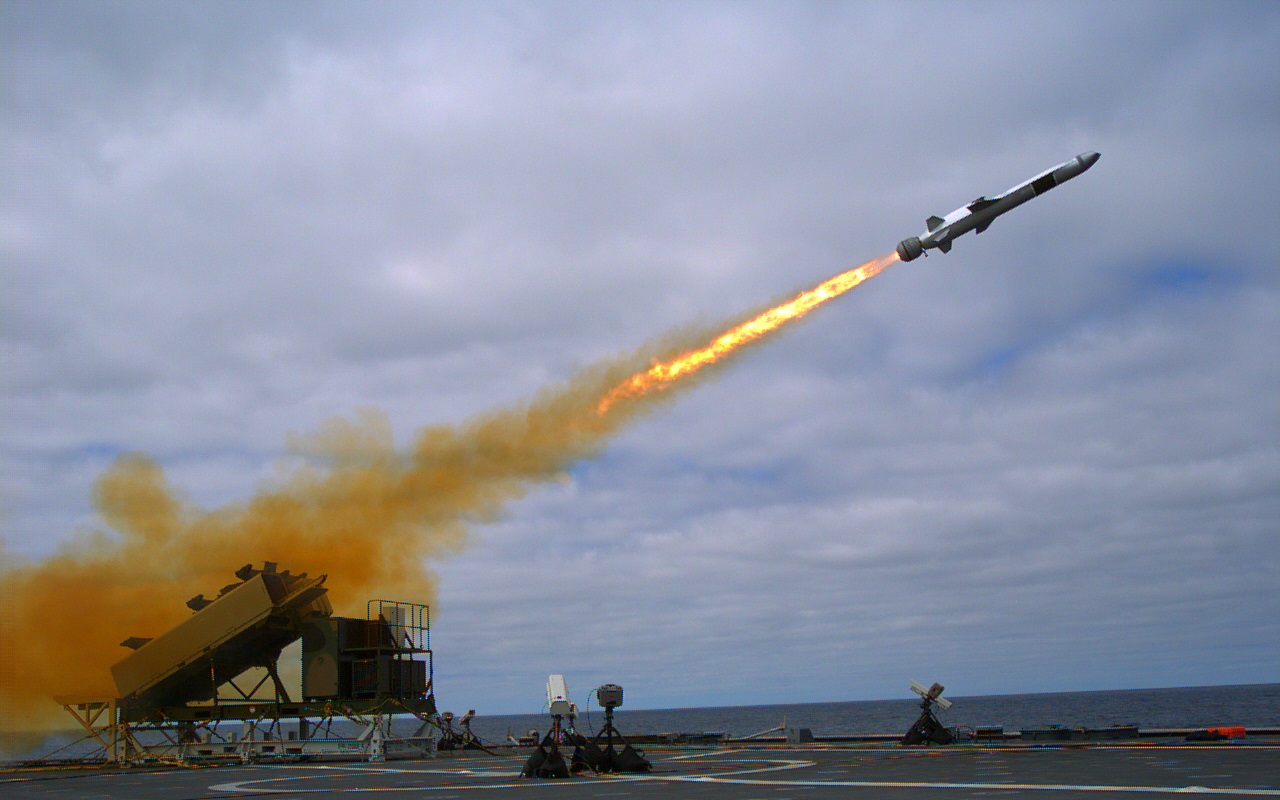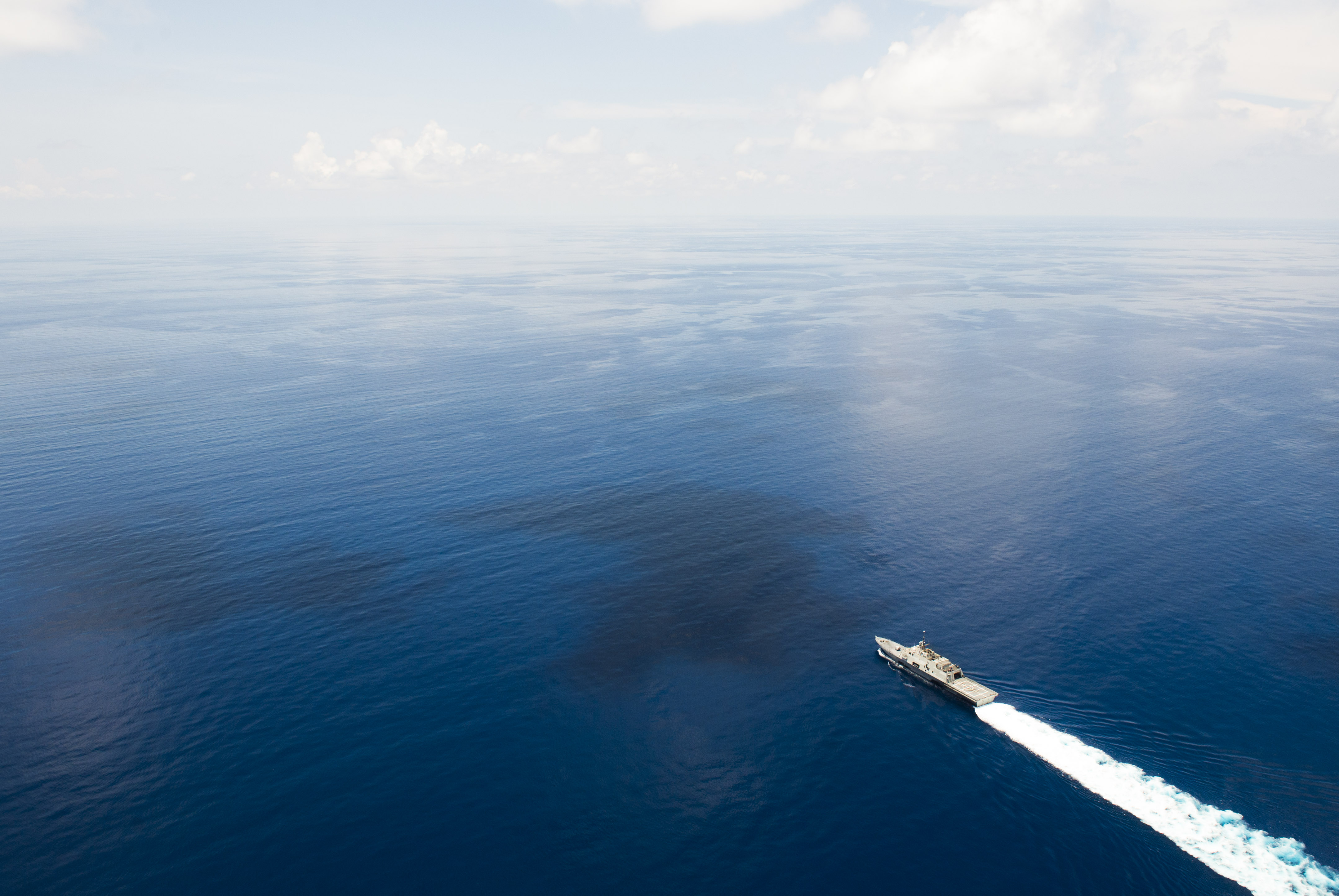
PENTAGON – The Navy hopes to have an over-the-horizon missile on a Littoral Combat Ship by the end of the year, the service’s surface warfare director told USNI News on Thursday.
Rear Adm. Peter Fanta (OPNAV N96) said in an interview that putting an OTH missile on LCS is “an absolute requirement” for the Navy. Despite challenges associated with moving money around mid-fiscal year, he said the stakeholders are all on board and engineers are hard at work studying which missiles could operate from the LCS deck.
“It takes a little while for the guys with the slide rules to figure out … what the deck strength needs to be and what angle the launcher needs to sit at,” Fanta said.
“That’s my biggest hold right now is guys doing math.”
Fanta said he is on track to have a missile on the LCS by the end of 2016, at least as a demonstration if not a permanent solution. He said the missile and the ship would be much more connected than a previous one-time demonstration of firing a Kongsberg Naval Strike Missile from USS Coronado (LCS-4).
“I’m looking at a number of missiles – not just the Norwegian missile, I’m also looking at Harpoon and several other missiles. What bolts on, and what can I put on a console that has feeds from the combat system? … I’m trying to do that, again, if I can get enough engineering done to allow me to do this, I’m trying to do that this year.”
The idea to put an OTH missile on the LCS came out of the study that recommended building an up-armored and up-gunned LCS-based frigate, Fanta said. But the idea also nestles nicely with Fanta’s vision for how the Navy’s small surface combatant should participate in anti-surface warfare in the future.
“What happens when you put long-range missiles on something? What happens when you take smaller combatants and hit an adversary from multiple directions?” Fanta said.
“We did a study up with the [U.S. Naval War College] and we’ve done internal OPNAV studies that say, what happens if – just do away with the rest of the fleet and just let small ships hit the adversary. And we find out that you lose a bunch of small ships, but you also put the enemy fleet on the bottom of the ocean.”
The addition of an OTH missile to the suite of weapons on LCS would allow the ships to use their low draft and 40 knot top speeds to fight in different ways.

“If you’re in a bunch of islands and you’re moving around fast, and you’re continuously shifting your logistics hubs, and you can take fuel at any little port, and you can turn around and grab a couple more missiles and go hit them again, and you bring back Ulithi Atoll, which in World War II had these huge ammunition dumps,” the wargame suggests the small surface combatants would be successful, he said.
“We relearned what we learned with the [Pegasus] hydrofoils back in the 80s. … We did an exercise back in the 80s, we brought the 2nd Fleet into an enclosed area of water, and we had two Harpoon-carrying hydrofoils take down most of 2nd Fleet. Why? Because you come at them where they can’t target you, in amongst the small context, in amongst the reef lines, and you can get in there in eight to 10 feet of water and you can come at them from all directions. You’re small, you’re hard to target, they don’t know where you’re coming from, and as long as you get the targeting information coming to you, they don’t know where you’re coming from.”
Fanta said the 1980s exercise showed that this strategy forced the 2nd Fleet to disperse its air wing, with each plane seeking out the small combatants, and “if you hit them from multiple directions, you put a lot of those ships on the bottom before they catch up to you.”
That strategy – learned in World War II, relearned in the 1980s and relearned yet again during the recent small surface combatant studies with OPNAV and the Naval War College – is precisely how Fanta would like to see the LCS fleet operate.
Bolting on the OTH missile is a good start but not a final step in realizing the vision, he added.
“What happens if I shoot a torpedo at an enemy surface combatant? Everything they’re building, everything the rest of the world is building is to take on cruise missiles,” he said.
“What happens if I’ve got a really good anti-surface torpedo the size of a Mk 48 and I pop it off the side of a surface ship and point it at an enemy group, and it goes a really long way and blows something up? I don’t know how they’re going to get away from it, that’s a cost-imposing strategy. And that’s really what we’re developing with that modular ability of LCS – bolt something else on and go try it. If I get a better missile, bolt it on. If I get a better weapon, sensor, whatever, bolt it on, let’s go try it.”





